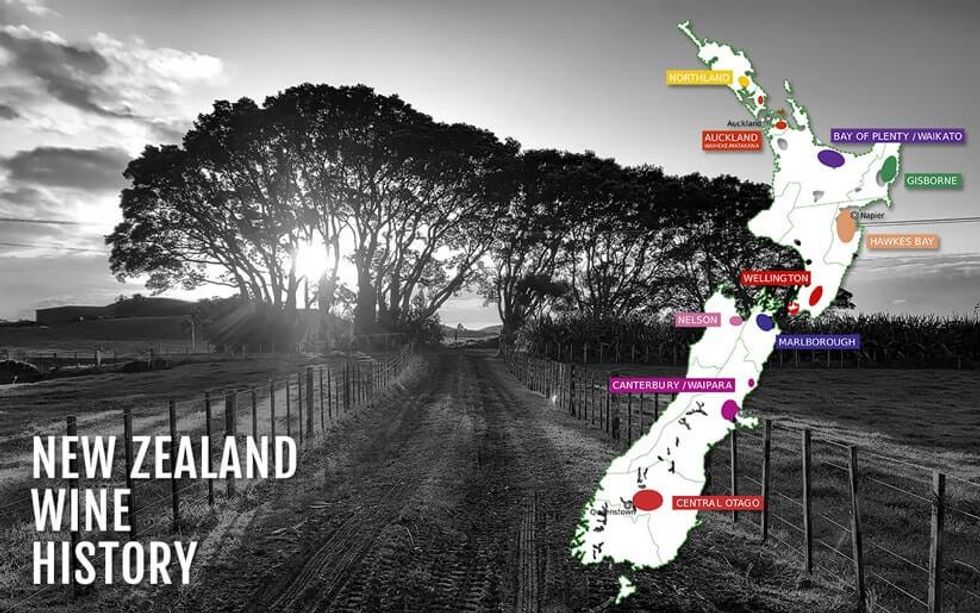Wine has been produced in New Zealand since the 19th century. The first commercial plantings were in Marlborough, Central Otago, and Hawke's Bay. Today, wine is grown all over New Zealand, with the majority of production in Auckland, Waikato/Bay of Plenty, Canterbury/Waipara, and Nelson. The most common varieties planted are Sauvignon Blanc, Chardonnay, and Pinot Noir.
The early days: when wine first came to New Zealand.
New Zealand's first settlers brought vines from England in the early 1800s. However, the climate was too cold for grapevines to thrive, and it wasn't until the 1860s that wine growing began in earnest. French immigrants planted vines in Auckland and Wellington, and the country's first wineries were soon established.
The early days of New Zealand wine were difficult. The industry was tiny, and most of the country's wines were shipped to Australia or England. It wasn't until the late 20th century that New Zealand wines began to find an international market.
New Zealand is home to some of today's most acclaimed wines. The country's cool climate and diverse landscape produce unique wines prized by collectors and connoisseurs.
The modern era: how wine has changed in recent years
In recent years, wine has changed dramatically. The modern era has seen a massive increase in the popularity of wine and a corresponding increase in the quality of the wine. This has been driven by several factors, including the rise of the internet and social media, which have made it easier for people to learn about wine and find new wines to try.
Wine popularity has also increased the number of wineries and vineyards worldwide. This has resulted in a wider variety of wines being available and more competition among wineries to produce high-quality wines. In addition, the modern era has shifted away from traditional grape varieties and production methods, with many winemakers experimenting with different grape varieties and techniques.
The future of wine: where New Zealand is headed
The future of wine in New Zealand is looking very exciting. The industry is growing and evolving, and new technologies are emerging that are changing how we make and enjoy wine.
Here are some of the things we can expect to see in the future of wine in New Zealand:
- More varieties of grapes are being grown.
- New winemaking techniques are being used.
- More sustainable viticulture practices are being adopted.
- A greater focus on quality over quantity.
- More innovative packaging and presentation methods are being used.
- The popularity of alternative wine styles, such as organic, natural, and biodynamic wines, continues.
Conclusion: final thoughts on the topic
In 1819, missionaries arrived in New Zealand and brought with them grape vines. The first commercial winery was established in 1851, and by the 1880s, there were over 100 wineries in the country. The wine industry continued to grow throughout the 20th century, with new styles of wine being produced and exported worldwide.
Today, New Zealand is home to some of the most iconic wine producers in the world. The country’s unique climate and terroir produce wines that critics and consumers love. From Sauvignon Blanc to Pinot Noir, New Zealand has something for everyone.
As the wine industry continues to grow, so does our understanding of its history. New Zealand may be a young wine-producing country, but it has a rich history that is worth exploring.




















 sunrise
StableDiffusion
sunrise
StableDiffusion
 bonfire friends
StableDiffusion
bonfire friends
StableDiffusion
 sadness
StableDiffusion
sadness
StableDiffusion

 purple skies
StableDiffusion
purple skies
StableDiffusion

 true love
StableDiffusion
true love
StableDiffusion
 My Cheerleader
StableDiffusion
My Cheerleader
StableDiffusion
 womans transformation to happiness and love
StableDiffusion
womans transformation to happiness and love
StableDiffusion
 future life together of adventures
StableDiffusion
future life together of adventures
StableDiffusion

















